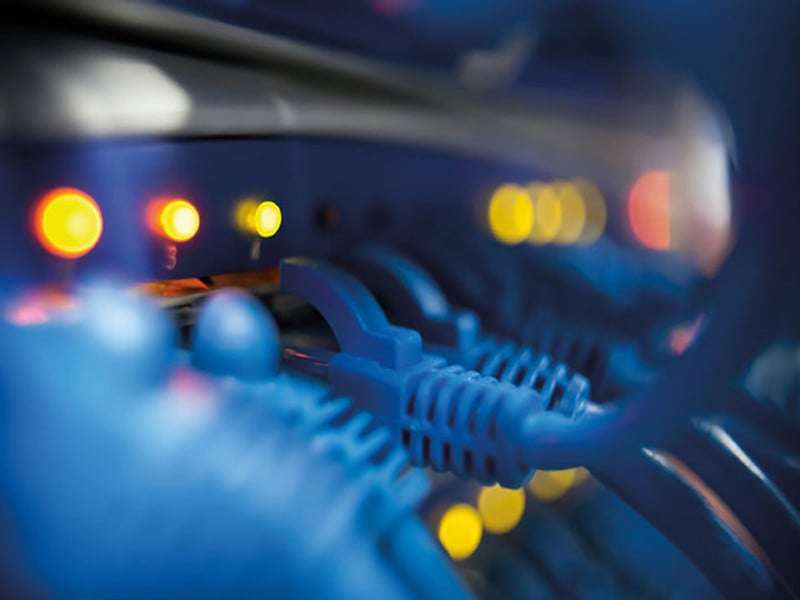Pakistan Telecommunication Company Ltd (PTCL) has confirmed that the country is experiencing internet disruptions due to a fault in one of its subsea cables, affecting the browsing speeds of users nationwide. The issue, which surfaced on Thursday, has been linked to a fault in the Asia-Africa-Europe-1 (AAE-1) subsea cable, which connects Pakistan to several international regions.
Internet Disruptions in Pakistan: A Breakdown of the Issue
On Friday, PTCL confirmed that its teams were working tirelessly to resolve the issue affecting the internet speeds across the country. The fault, which occurred in the AAE-1 cable near Qatar, is significantly slowing down the internet speeds for users in Pakistan. While the issue is being addressed, PTCL acknowledged the inconvenience it has caused to its users and expressed regret over the disruptions.
The AAE-1 subsea cable, which has been operational since 2017, is a critical infrastructure component in the global internet network, connecting multiple countries across Asia, Africa, and Europe. Pakistan relies on this cable for its internet connectivity with several countries. Unfortunately, any damage or fault in the cable can lead to widespread disruptions, as is currently being experienced.
The Asia-Africa-Europe-1 Cable: A Lifeline for Global Connectivity
The AAE-1 subsea cable is one of the most significant undersea cables, offering high-speed internet access to several countries, including Pakistan, Vietnam, Singapore, Malaysia, Thailand, India, Oman, the UAE, Qatar, Saudi Arabia, Egypt, Greece, Italy, and France. It plays a crucial role in facilitating data exchange and internet services across these regions.
This fault comes at a time when Pakistan has been grappling with slow internet speeds, despite some recent improvements in mobile and fixed broadband speeds. According to the latest data from global speed tests conducted in October, Pakistan still ranks among the countries with some of the slowest internet speeds, which compounds the frustration caused by this subsea cable issue.
How the Cable Fault is Affecting Pakistan’s Internet
The disruption in the AAE-1 subsea cable has led to slower browsing speeds for users across Pakistan. With the country heavily dependent on this cable for international connectivity, the fault is causing significant delays in the data transmission process. This is particularly evident in international websites and services that rely on the cable for seamless access.
While PTCL is working on a resolution, users are being asked to be patient as the issue is rectified. The company has assured that its technical teams are actively monitoring the situation and will resolve the fault as soon as possible.
The PTA’s Confirmation and Role in the Situation
The Pakistan Telecommunication Authority (PTA) confirmed the fault on Thursday, providing more details on the cause of the disruptions. According to the PTA, the fault occurred in the AAE-1 cable near Qatar, and it is being addressed by PTCL and other relevant authorities.
The AAE-1 cable connects several countries and provides vital internet access to millions of people. The PTA’s acknowledgment of the issue helps clarify the nature of the problem and provides transparency regarding the situation.
Impact of the Internet Disruptions on Users
As a result of this fault, many users are experiencing slower internet speeds, particularly when accessing international websites or using services that rely on cross-border data exchanges. This has led to frustration, especially for businesses, students, and professionals who depend on fast and reliable internet for their day-to-day operations.
Internet disruptions can have a significant economic impact as well, particularly in countries like Pakistan where the digital economy and online services are steadily growing. These disruptions highlight the importance of maintaining robust and reliable internet infrastructure, especially in a world that is increasingly dependent on digital connectivity.
The Issue of Internet Shutdowns in Pakistan
While the internet disruptions caused by the AAE-1 cable fault are technical in nature, Pakistan has also faced challenges related to internet shutdowns. On Wednesday, members of the Senate Standing Committee on Information Technology raised concerns about the practice of shutting down internet services in the country. The committee expressed concern over the negative impact of such shutdowns on the public and businesses, particularly when directives come from the interior ministry.
In response, the PTA chairman explained that internet shutdowns had been a recurring issue in Pakistan since 2016 but had recently been deemed unlawful. He added that the final legal opinion on the matter must come from the interior ministry. This discussion highlights the ongoing debate about internet governance and the balance between security concerns and freedom of access.
Legal and Policy Implications of Internet Shutdowns
The legal implications of internet shutdowns have been a topic of significant debate in Pakistan. In the past, internet services were shut down in various regions during times of unrest or security concerns. However, recent judgments have ruled that such shutdowns are unlawful, raising important questions about the legal framework surrounding internet access and the powers of the government to restrict it.
The PTA’s clarification on the matter is a step toward ensuring that internet access remains a fundamental right for Pakistani citizens. The authority’s role in balancing security with public access to information remains crucial as the country continues to navigate its digital landscape.
What’s Next for Pakistan’s Internet Connectivity?
The ongoing internet disruptions caused by the fault in the AAE-1 subsea cable underscore the importance of robust internet infrastructure and maintenance. As PTCL works to resolve the issue, Pakistan must also explore ways to enhance its internet services and reduce dependence on a single cable for international connectivity. The government and telecommunications providers must prioritize the development of alternative networks to prevent such disruptions in the future.
Improvement of Broadband Services and Future Planning
Pakistan has made strides in improving its broadband services, but it still lags behind other countries in terms of speed and reliability. Addressing the challenges related to undersea cable faults and internet shutdowns should be a key part of the country’s future digital strategy. Investment in technology and infrastructure will be crucial to ensuring that Pakistan can meet the growing demands for high-speed internet in the coming years.
FAQs
1. What caused the internet disruptions in Pakistan?
The disruptions were caused by a fault in the Asia-Africa-Europe-1 (AAE-1) subsea cable, which connects Pakistan to several international regions.
2. How long will it take to fix the issue?
PTCL’s teams are actively working on resolving the issue, but the timeline for resolution depends on the extent of the fault and the repair process.
3. How does the AAE-1 cable affect Pakistan’s internet?
The AAE-1 subsea cable is critical for Pakistan’s international internet connectivity. A fault in the cable can lead to slower speeds and disruptions in accessing international websites and services.
4. What is Pakistan’s current internet speed ranking?
Despite improvements in broadband speeds in October, Pakistan remains among the countries with some of the slowest internet speeds in the world.
5. What are the concerns about internet shutdowns in Pakistan?
Members of the Senate Standing Committee on Information Technology raised concerns about the practice of internet shutdowns in Pakistan, particularly when ordered by the interior ministry. The PTA clarified that such shutdowns are now deemed unlawful.
SEE ALSO



